The History
The idea behind the Arctic Henge is to connect Icelandic culture, literary history, and classical science with the unique environmental conditions at the Arctic Circle. The result is a striking visual spectacle. The Arctic Henge in Raufarhöfn is a community project led by the residents of northeast Iceland. Over the years, board members have contributed significant voluntary efforts, driven by dedication and passion.
The Arctic Henge is Iceland’s largest outdoor artwork, located on Melrakkaás in Raufarhöfn, the northernmost village in the country. Here, the days are longest in summer and shortest in winter. Around the summer solstice, the sun does not set for several weeks. The light is unique, and due to the flat landscape, there is an unobstructed 360-degree horizon, allowing the sun to be enjoyed year-round from sunrise to sunset.
The Arctic Henge has a diameter of approximately 50 meters, with 6-meter-tall gates oriented toward the cardinal directions. At the center of the circle stands a 10-meter-high column resting on four pillars, with plans to crown it with a crystal top that refracts sunlight and casts rays throughout the Arctic Henge. All the stones used in its construction are sourced from a local quarry in Raufarhöfn, with the largest weighing up to 3 tons.
The project was inspired by Erling B. Thoroddsen’s vision of harnessing the endless expanse of the flat terrain, the Arctic light, and the midnight sun. The Arctic Henge serves as a sundial, a play of light, and a blend of ancient mythology and cultural ideas, drawing on the mythological universe and the Dwarves’ List (Dvergatal) from Völuspá and Snorri’s Edda. This imaginative world comes to life in the Arctic Henge on Melrakkaás, near Raufarhöfn. The artist Haukur Halldórsson collaborated with Erling on the concept, creating sketches and a model that guided the construction.
The idea for the Arctic Henge also draws inspiration from the famous Stonehenge in England, particularly in terms of architectural parallels. Another similarity lies in the boldness and optimism required to bring such a visionary project to life, much like Stonehenge in its time.
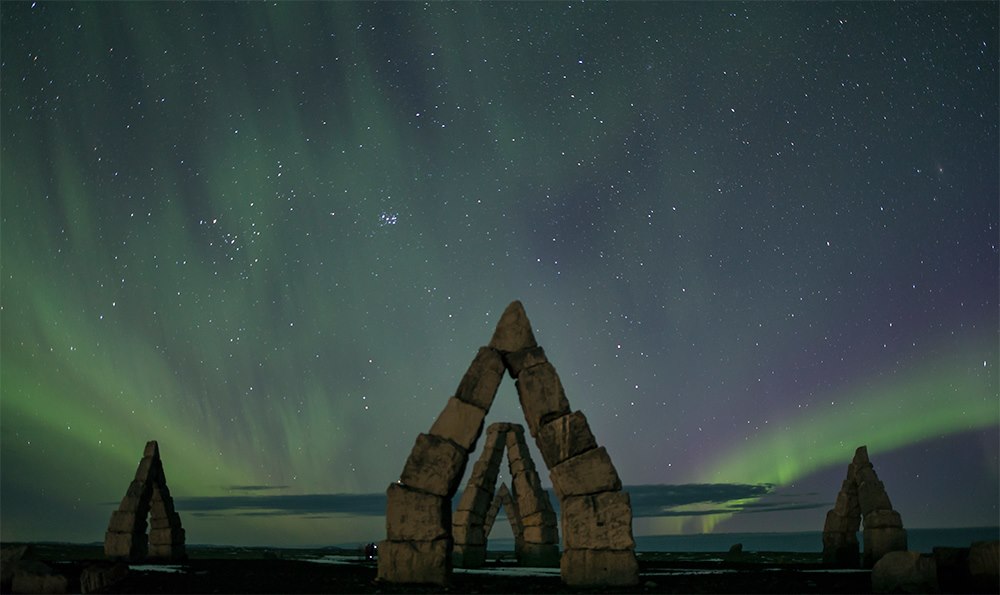
The interplay of light and shadow inspired Erlingur Thoroddsen, then a hotel manager in Raufarhöfn, to explore ways to capture the stunning expanse and lighting of Iceland’s northeast and use it for tourism.
Initial ideas involved marking time divisions with a sundial and amplifying the effects of the midnight sun. However, as the concept evolved, the unique conditions of Melrakkaslétta offered an even more powerful vision. Erling’s reflections on harnessing the vast horizon, Arctic light, and midnight sun led to discussions with scientists, builders, thinkers, and artists, eventually developing into the current design. The project began to take shape when Erling shared his ideas with artist Haukur Halldórsson shortly after the turn of the millennium.
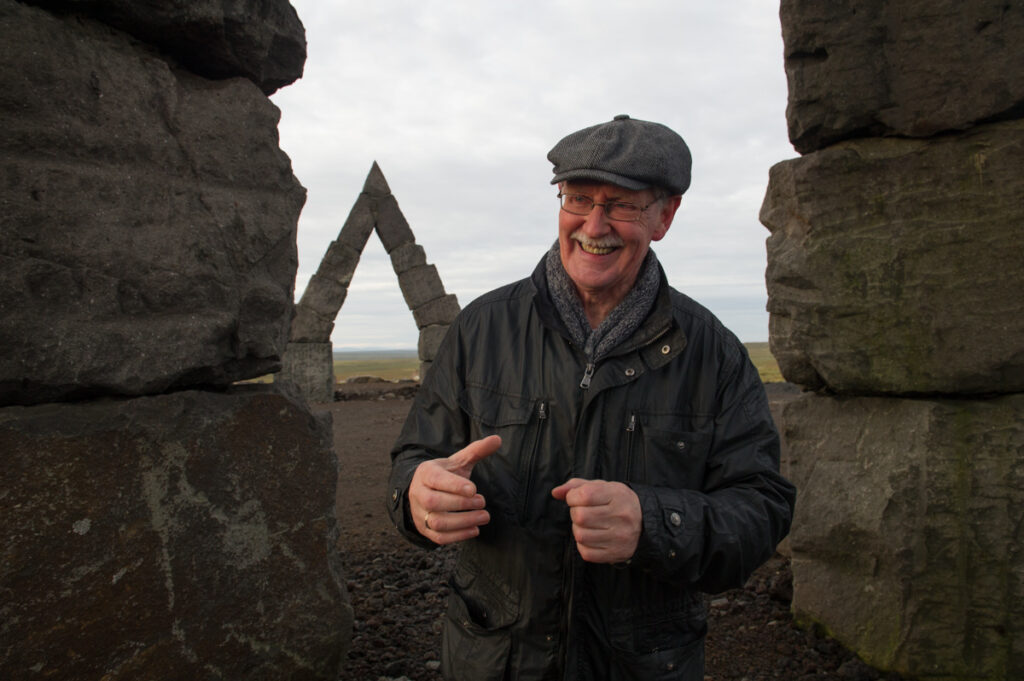
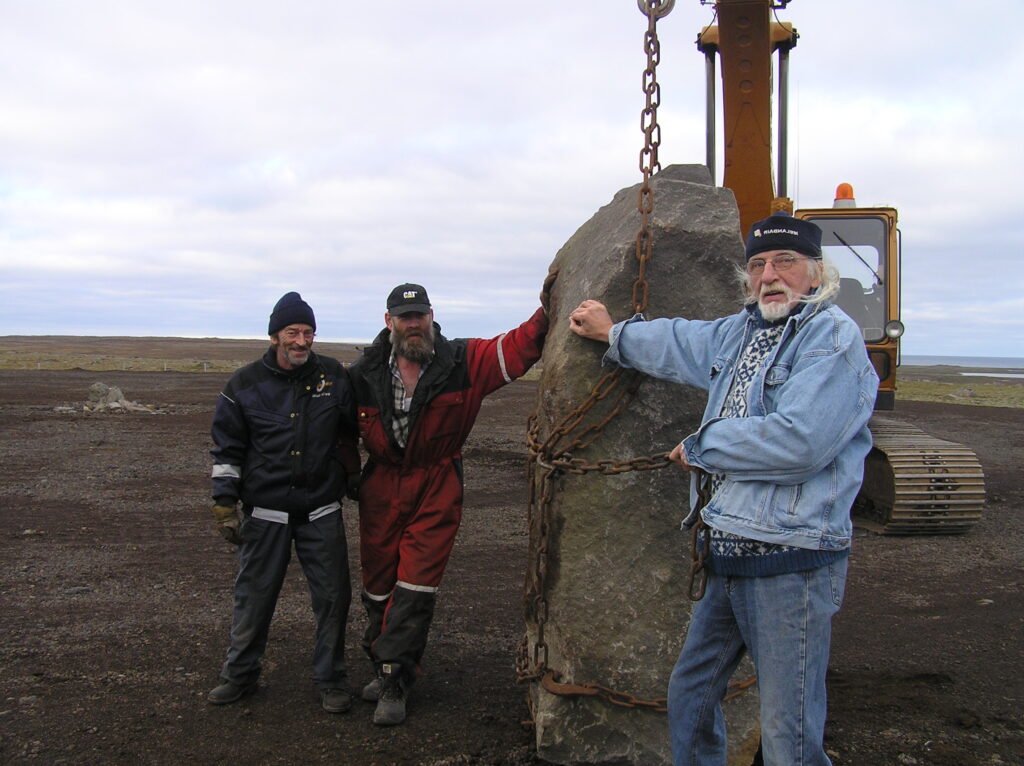
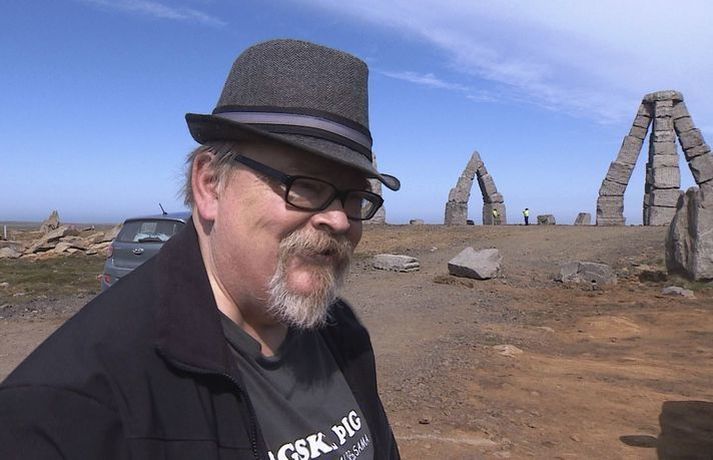
A Fusion of Light and Norse Mythology
The Arctic Henge emphasizes not only sunlight and brightness but also a fusion of contemporary and ancient Norse culture. The Dvergatal from Völuspá is reinterpreted, breathing new life into the ancient sagas of Snorri’s Edda.
In Völuspá, the list of dwarves appears in stanzas 9 to 16 and is known as the Dvergatal. The Arctic Henge weaves the existence of the dwarves into the play of sunlight, giving them new roles.
While the roles of the dwarves are unclear in the Dvergatal, except for Austri, Vestri, Norðri, and Suðri, who hold up the sky, the concept of the Arctic Henge reimagines the dwarves and assigns them personified roles. Insights from Iceland’s National Archives revealed that in writings by Finnur Magnússon, an archivist in Copenhagen, the names of the dwarves are linked to the seasons. This connection inspired the creation of the Dwarves’ Year Circle.
The Dwarves’ Year Circle
The Dwarves’ Year Circle will be located within the Henge, with stones representing 72 dwarves in total. For example, Vifri, one of the dwarves, is described as radiating many colors and is positioned in the circle accordingly. The names align with the seasons, as described in Snorri’s Edda and Völuspá.
The dwarves are arranged throughout the year, with each week spanning five days. They are also part of the old Norse months, with six dwarves belonging to each month, which is tied to a specific god. This creates a unique dwarves’ calendar, linking the dwarves to birthdays and forming a personal connection with them.
Stylized Interpretation
The project is inspired by historical sources, but these have been stylized to fit the Henge’s design. It is worth noting that the work does not strictly adhere to definitive historical interpretations or written sources about dwarves, calendars, or other elements used in its creation.
The Nature
Melrakkaslétta is renowned for its natural resources, including fishing, coastal grazing, eiderdown collection, egg gathering, and productive fishing lakes. The area boasts stunning natural beauty in the spring and during summer evenings, as well as diverse birdlife. All around, the landscape offers dramatic scenery and beautiful hiking trails.
During the nesting season, visitors are asked to tread carefully and respect the birdlife. It’s recommended to carry a stick, wear a hat, or even a helmet to protect yourself from Arctic terns, which often act as vigilant guardians here, as they do in many other places. Be mindful not to step on nests.
The area is home to diverse flora, including alpine catchfly, thyme, mountain dandelions, reindeer lichen, woolly willow, sedge, bilberry shrubs, gray moss, violets, crowberry, mountain willow, purple saxifrage, globeflowers, wild roses, saxifrage, Icelandic poppies, and twinflower, to name just a few.
Research at Rif
The Rif Research Station operates in Raufarhöfn and on Melrakkaslétta. Since its founding, the station has worked toward the following vision:
“The research station in Raufarhöfn will become the leading center for Arctic ecosystem research in Iceland. The station will serve as an international hub, connecting Arctic-related topics with the unique natural environment of northeast Iceland, particularly Melrakkaslétta. Through this, the station aims to actively participate in global discussions about Arctic ecosystems and the impacts of climate change.”
Visit the station’s website or Facebook page to stay updated on fascinating developments.
Journey of the Sun
Raufarhöfn is the closest populated area to the Arctic Circle in Iceland. Here, the days are longest in summer and shortest in winter, with the sun remaining above the horizon for several weeks around the summer solstice. The light is unique, and due to the flat terrain, there is an unobstructed 360-degree horizon, allowing the sun to be visible all year round, from sunrise to sunset.
Today, we can precisely track the sun’s position at any time of the year. This makes it possible to play with light and shadows in various ways at the Arctic Henge, whether in winter or summer.
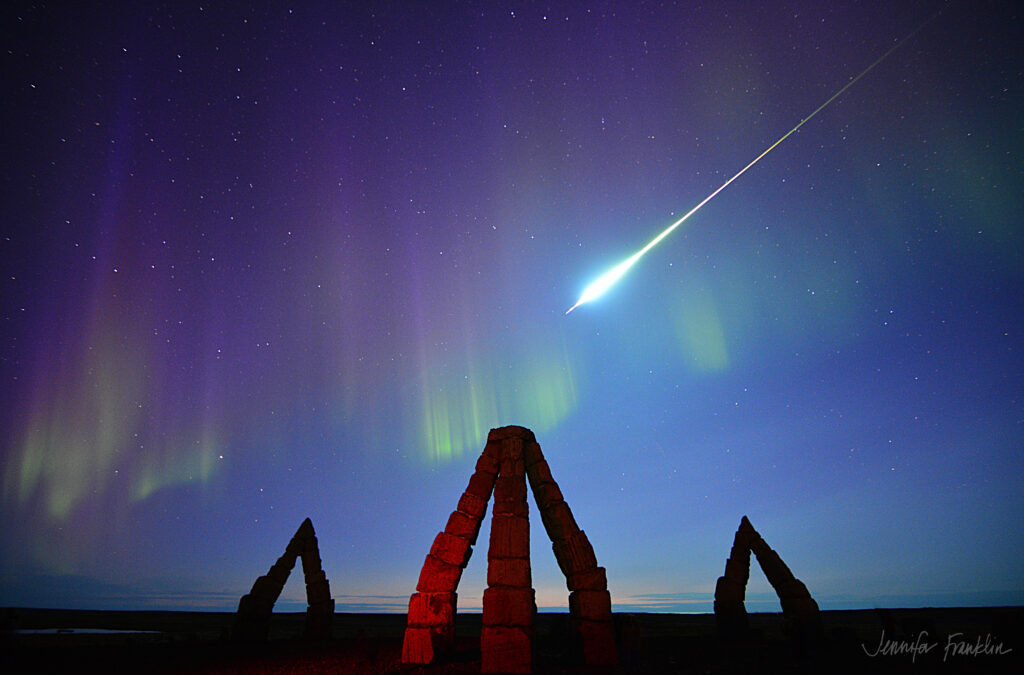
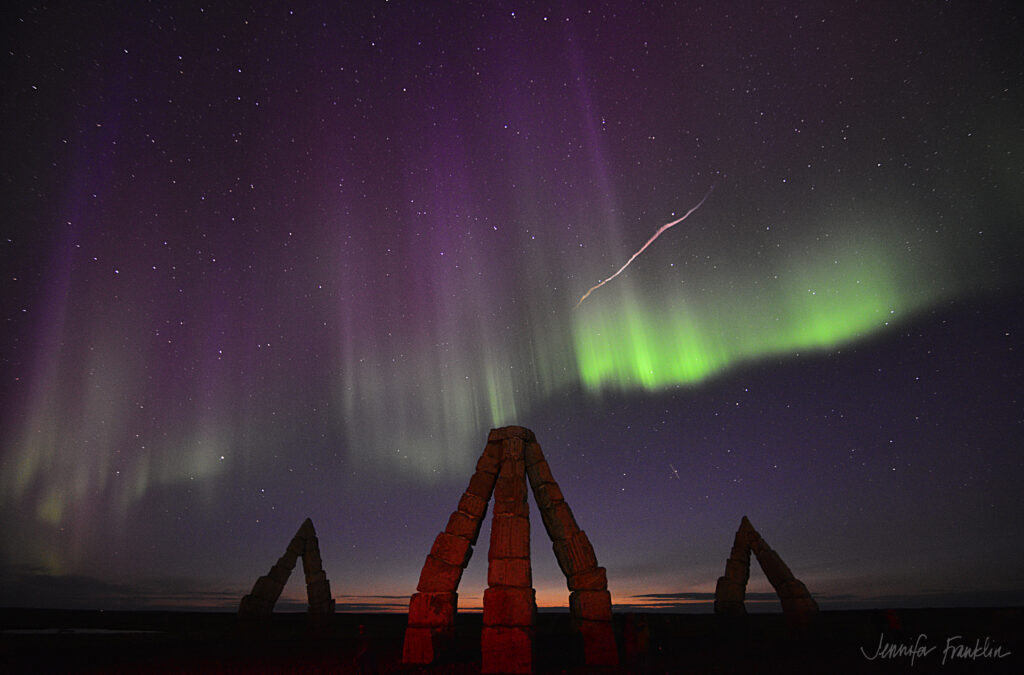
Standing within the stone circle and gazing at the sky on a winter night is a breathtaking experience. The starry sky changes with the seasons and the position of the Milky Way over the Henge. Many natural phenomena can be observed here: the moon, the sun, the northern lights, stars, and the Milky Way itself.
This is an ideal location to witness all celestial events throughout the year, not to mention solar eclipses or other major astronomical phenomena.
Development
The gates—Austri, Vestri, Norðri, and Suðri—have been erected. At the center of the circle stands a 10-meter-high column, planned to be crowned with a crystal top that refracts sunlight and projects its rays across the Arctic Henge. The column rests on four pillars, with the spaces between them aligned with the four gates: Norðri, Austri, Suðri, and Vestri. As a result, the midnight sun will appear through the gap facing the northern gate, and the structure can also function as a compass.
The spaces between the pillars point toward the cardinal directions, enabling the midnight sun to be visible from the southern gate through the central column to the northern gate, and the sunrise to be visible from the western gate through the column to the eastern gate. The interplay of light and shadow highlights the traditional time divisions (eyktamörk).
Four Unique Sculptures
The Arctic Henge will feature four sculptures, each with its own significance:
1. The Altar of Fire and Water (Northeast)
This sculpture reflects the elemental forces of fire and water, which hold great significance in all religions. It will feature an altar with a flame and a bowl of water. Respect for these elements fosters faith and inspiration. Visitors can come here to meditate, make wishes, or pray according to their beliefs.
2. The Polaris Pointer (Northwest)
This sculpture points to the North Star, which has guided sailors and explorers across unknown lands for centuries. As it remains fixed in the night sky, it always indicates north. In a world increasingly reliant on technology, the North Star can serve as a timeless reference point in moments of need.
3. The Solar Throne (Southwest)
At this location, the sunlight in a specific position heralds the arrival of summer. A webcam will be installed here, allowing visitors to share the moment with friends and family around the world. Travelers can call distant loved ones and connect under the shimmering midnight sun.
4. The Beam Choir (Southeast)
This is a narrow passage between six tall pillars. Visitors can enter the choir, one at a time, sit on a central seat, clear their minds, and draw energy from the stones. It is said that those who enter the choir will emerge as better individuals.
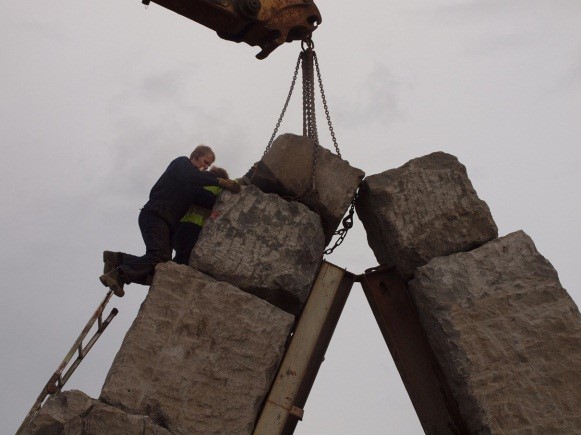
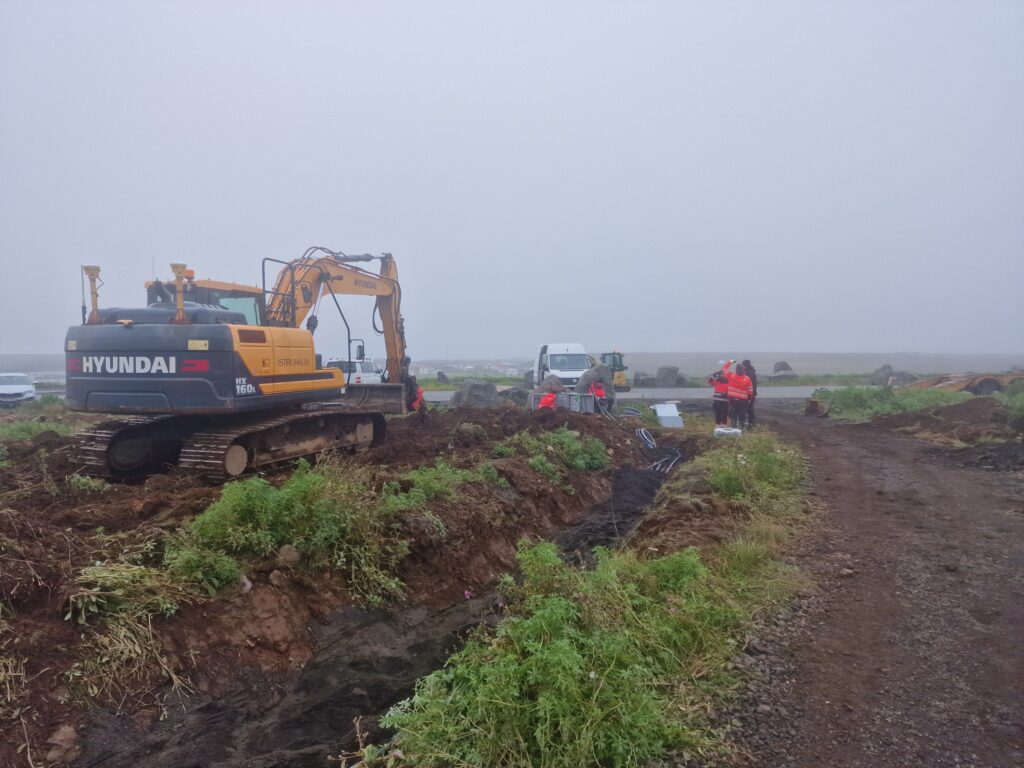
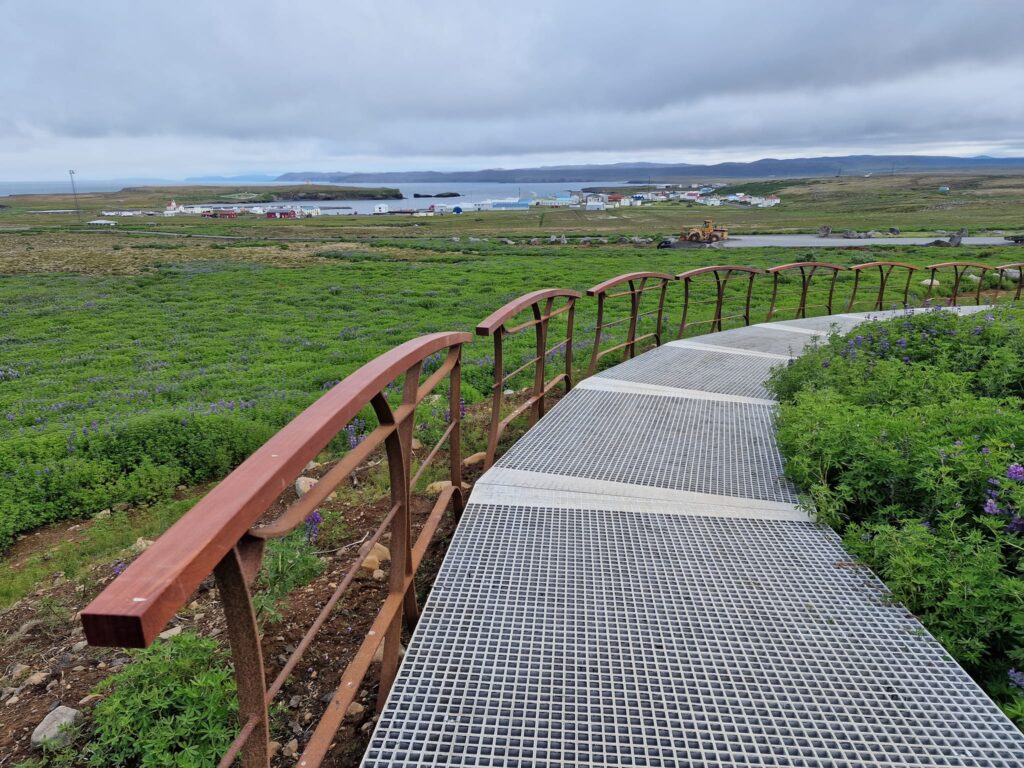
Progress and Development
The Arctic Henge has been built step by step, with progress depending on the funding available. In recent years, the focus has been on infrastructure, including parking facilities, pathways, water, and electricity.
The walking path and bridge leading from the parking area to the Henge is called Bifröst. In Norse mythology, Bifröst is the bridge between Midgard (the world of humans) and Asgard (the realm of the gods). It appears to humans as a rainbow, earning it the name “the rainbow bridge.” Icelandic culture is deeply rooted in Norse mythology, as reflected in place names, buildings, businesses, sports clubs, and even idioms.
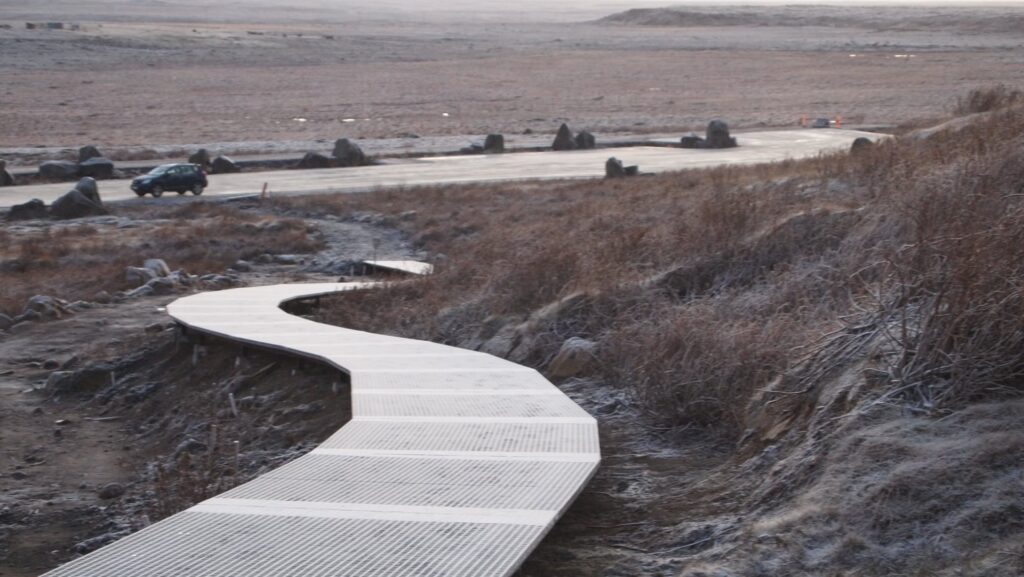
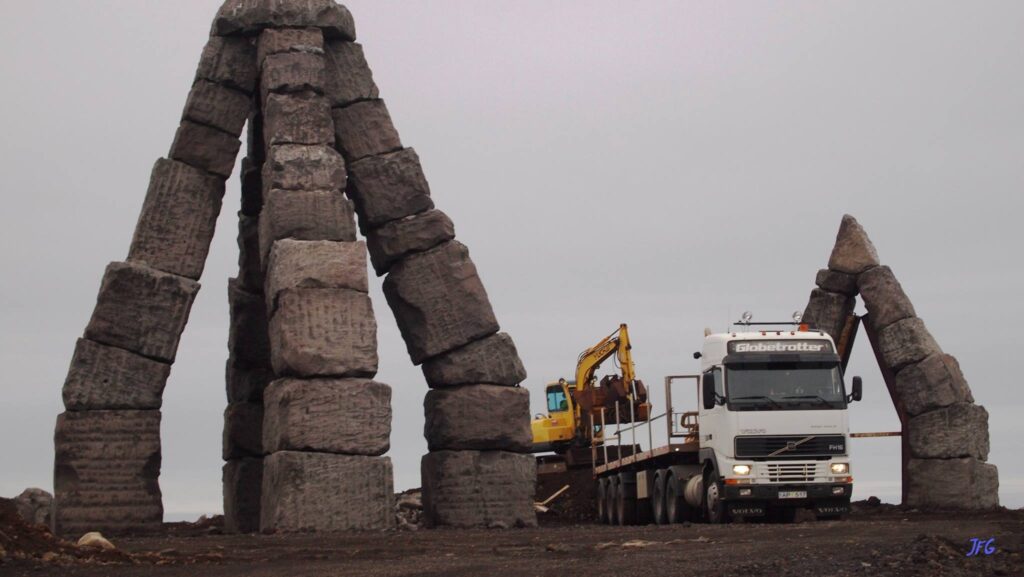
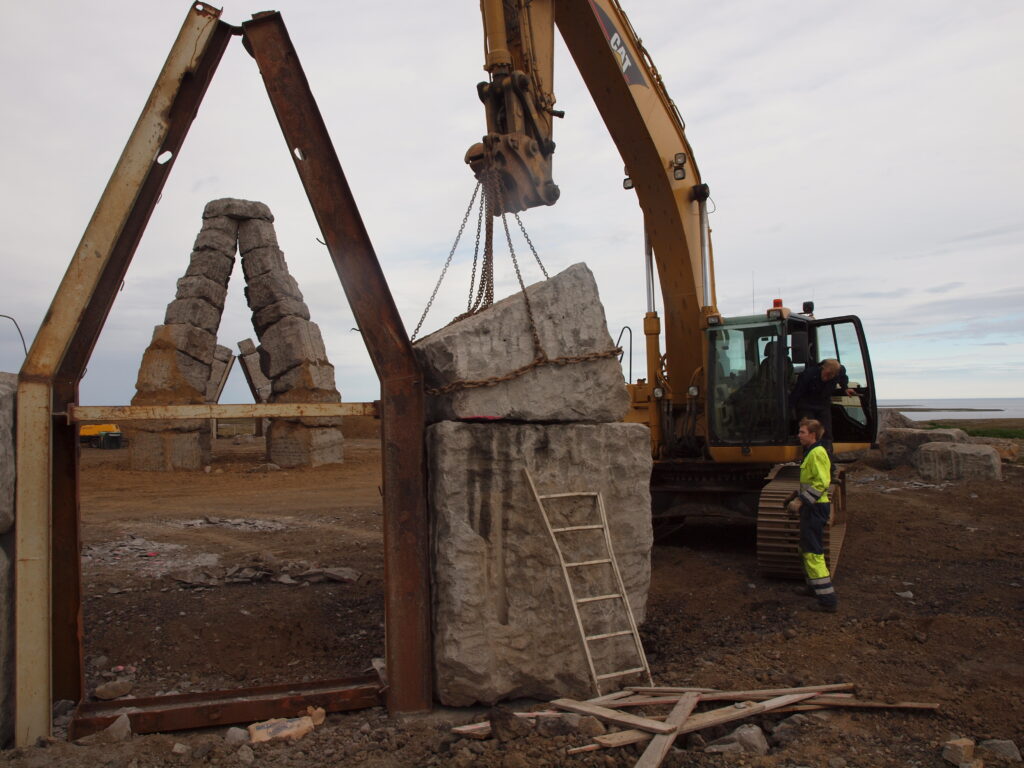
Norse Mythology in Raufarhöfn
Raufarhöfn is steeped in connections to Norse mythology. The Arctic Henge is located on Melrakkaás, and to the south lie the ridges of Nónás, Miðás, and Bæjarás. The village’s community center is called Hnitbjörg, the senior citizens’ club is based in Breiðablik, and the local youth association is named Austri. Look around and see if you can spot more names inspired by Norse mythology in the area.